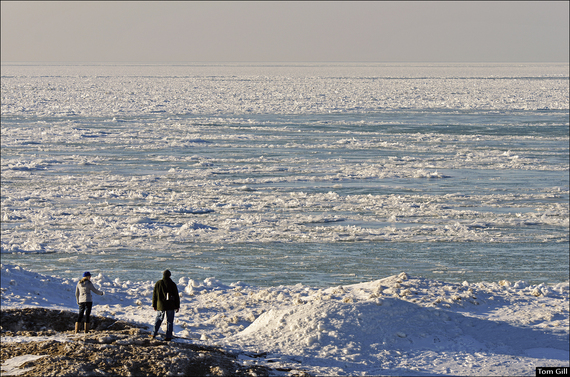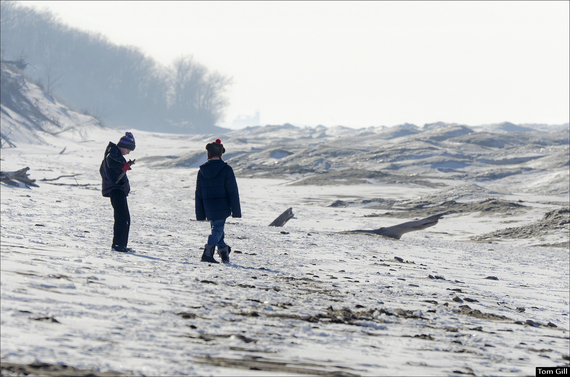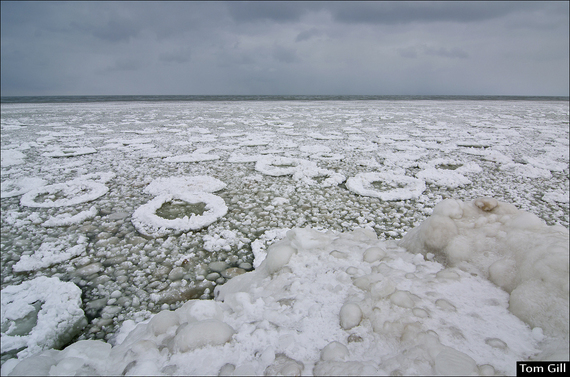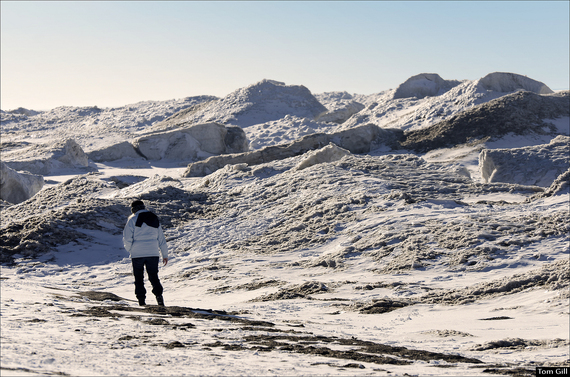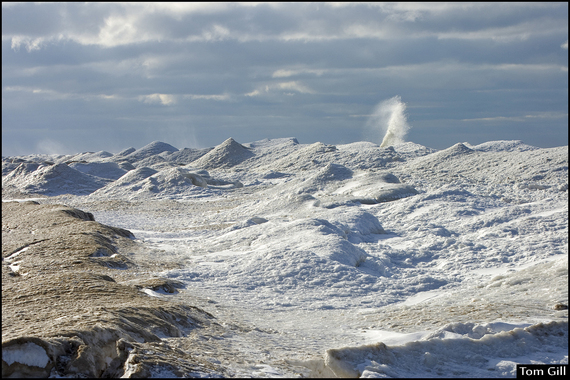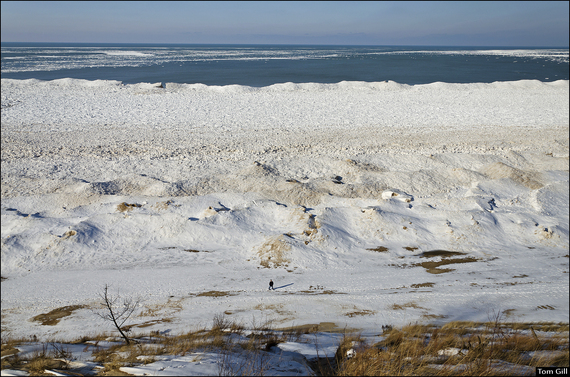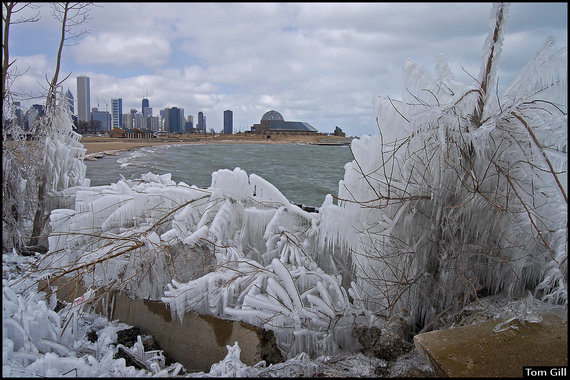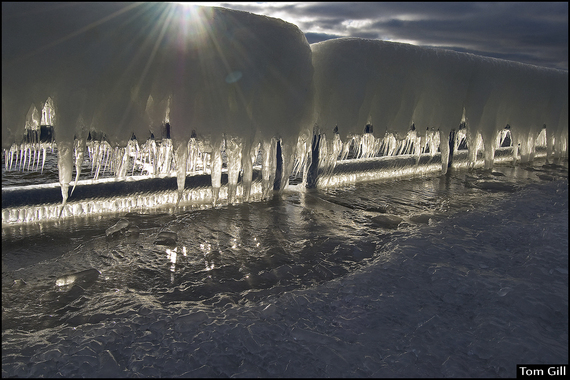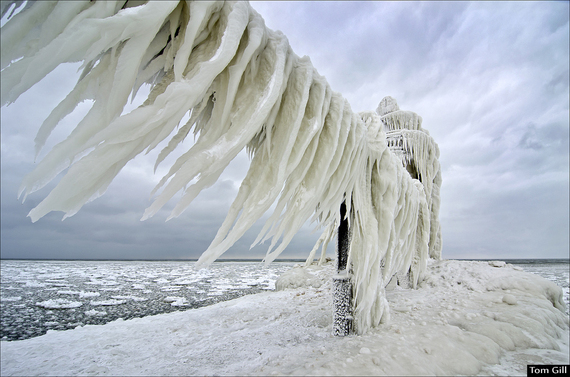When most people think of beaches, they visualize the tropics--white sand, warm water, and crowds of sunbathers. My view, however, is contrary. I enjoy exploring The Great Lakes beaches in winter, when temperatures fall well below freezing. Don't get me wrong, I love tropical beaches and warm weather. But to me, a frozen shoreline offers so much more than the typical tropical beach.
In summer, the beaches of The Great Lakes exhibit much the same environment as the warm climate beaches - minus the palm trees of course. But as temperatures drop below freezing, the northern beaches transform into a seemingly endless landscape of ice and snow, a scene that takes on the look of the arctic.
If you've ever entertained the thought of visiting The Great Lakes during the "off season," consider bundling up, lacing your boots, and making the trip this winter. It's best to wait until the temperatures have remained below freezing for a few weeks, so the landscape has a chance to transform. Crowds aren't a problem, but many beach access points are closed during the winter. So, before setting off, make sure to find an access point that's open year-round. Hiking a few miles from a winter parking area is often necessary to reach a favorite spot, so dress accordingly.
The main feature of a Great Lakes shoreline in winter is ice, but not the type of ice one typically finds around the neighborhood. Along the Great Lakes beaches, the winter visitor will experience ice formed in place by spray and waves, ice drifting in from open water, and ice piled high by waves and wind. It's the combination of these types of ice that create vast, mountainous ranges of ice along the beach. Over time, the wind and waves pile up the ice and it often freezes into mounds several meters high. Under calmer conditions, drift ice packs in against the mounds, creating flat areas between them. The longer the cold weather and wind, the larger and higher the expanses of ice.
Viewing these ice mountains from the low vantage point of the beach is stunning. The mounds often exceed 20 feet in height, and completely obstruct any view of the horizon. Taking into consideration the ice mounds at the shoreline and the sand dunes on shore, a stroll on the beach feels like a walk in a wide, northern mountain valley.
Those who are brave enough to venture out on a windy day will likely witness the formation of these ice mounds, and watch as waves crash into the ice, sending water and chunks of ice meters into the air. The water and ice fall onto the outermost mound, adding another few millimeters of height to it. The sound created by these splashes is peculiar. Muffled by the vast amount of ice; it reminds me of a whale spout. An important warning to those who might consider walking onto these mounds: Don't. Areas of thin ice and hidden holes can be deadly.
Those who muster a bit of strength and climb the sand dunes to gain a higher vantage point will be rewarded with a breathtaking view. From a higher vantage point visitors can see over the ice mounds to the horizon. At times, the surface of the lake is completely frozen over and beneath a cover of snow, solid white. At other times, deep blue water weaves between floes of ice. It's from this viewpoint that the environment takes on the look of the arctic.
In the image below, the ice mounds extend thousands of feet into Lake Michigan. It's difficult to realize the extent of the ice, until you pinpoint the person standing on the beach at the bottom of the photograph.
In urban settings, winter along the shore is just as fascinating. The spray from waves freezes onto everything in reach, from tiny blades of grass to 40 foot tall lighthouses.
Location dictates the ice build-up, and the southeast portion of Lake Michigan receives a good amount of ice. Prevailing winds from the west and north travel unimpeded over the length of the lake, building waves that can exceed 20 feet in height. These waves crash into the shore, creating spray that quickly freezes on every surface.
Lighthouses are one of my favorite subjects to photograph, especially when they're covered in ice. Built at the head of piers, the St. Joseph, South Haven, and Grand Haven lighthouses--all located in the state of Michigan--are often covered in a thick layer of ice. These are the lights I visit most frequently in winter, and they rarely disappoint.
Instead of hibernating in your house all season, and before you book a plane ticket to the tropics, consider breaking with tradition, and visiting the shores of the Great Lakes this winter. Just remember to use caution and play safe.
Tom's Photoblog and Flickr photo gallery
